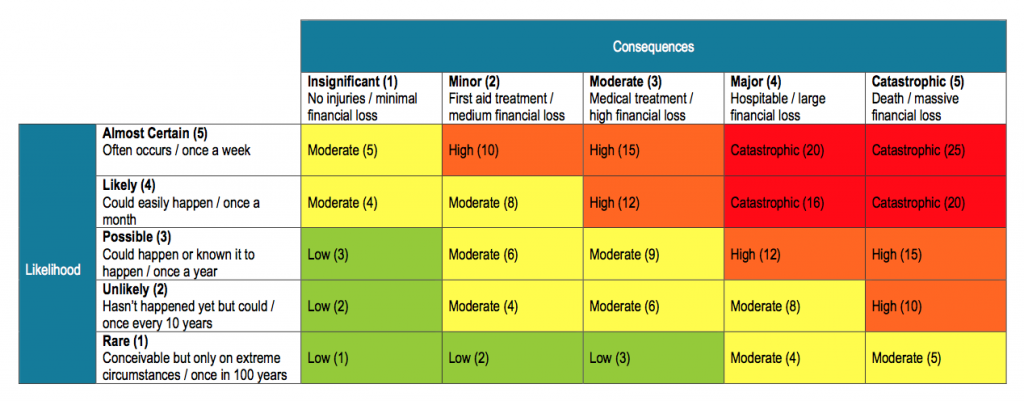What is a Risk Assessment Matrix?
What if I told you that construction risk assessments were so unnecessarily complicated that they actually constrain your productivity? If you’ve ever had to deal with an OHS risk assessment matrix than you’d know what I’m talking about.
Even the best risk assessment matrix can be long and overcomplicated. This means that workers have to stay off the job for longer just to finish the required risk assessment forms. But what is a risk assessment matrix?
Risk Assessment Matrix Template
Risk assessment matrices are a common tool for risk evaluation and are used through a variety of industries and professions. The aim of a risk assessment matrix is to determine the likelihood and consequence of various health and safety hazards and risks. Usually presented in a table or graph format, risk assessment matrices usually offer three standards:
1-2: Low likelihood, low consequence: this area usually indicates that the health risks at work are either effectively controlled or are not prevalent enough to warrant concern.
3: Medium likelihood, medium consequence: these risks are usually judged to be controllable within reason and represent the bare minimum of acceptable risk in the workplace.
4-5: High likelihood, high consequence: risks identified in this area require stronger control measures to fall within reasonably practicable health and safety standards.

Along each axis of the graph, the various levels of consequence and likelihood are numbered. To retrieve an accurate level of total risk, these numbers are multiplied together according to where the specific risk falls on the graph or table. Although most businesses will have different guides, this general risk assessment template provides a basic understanding of a standard risk assessment matrix example.

